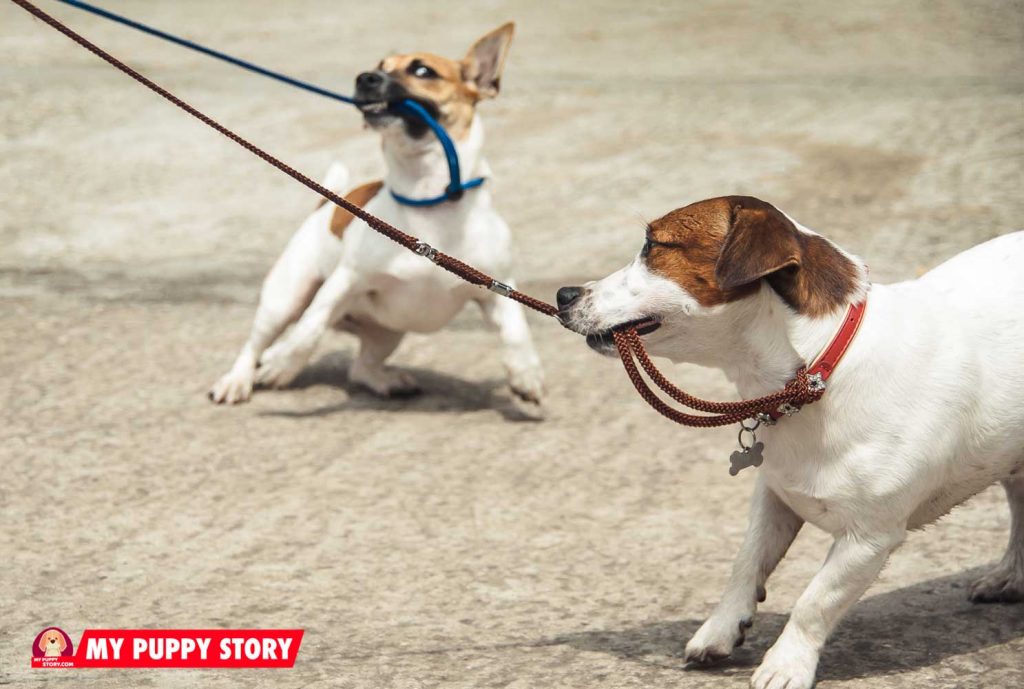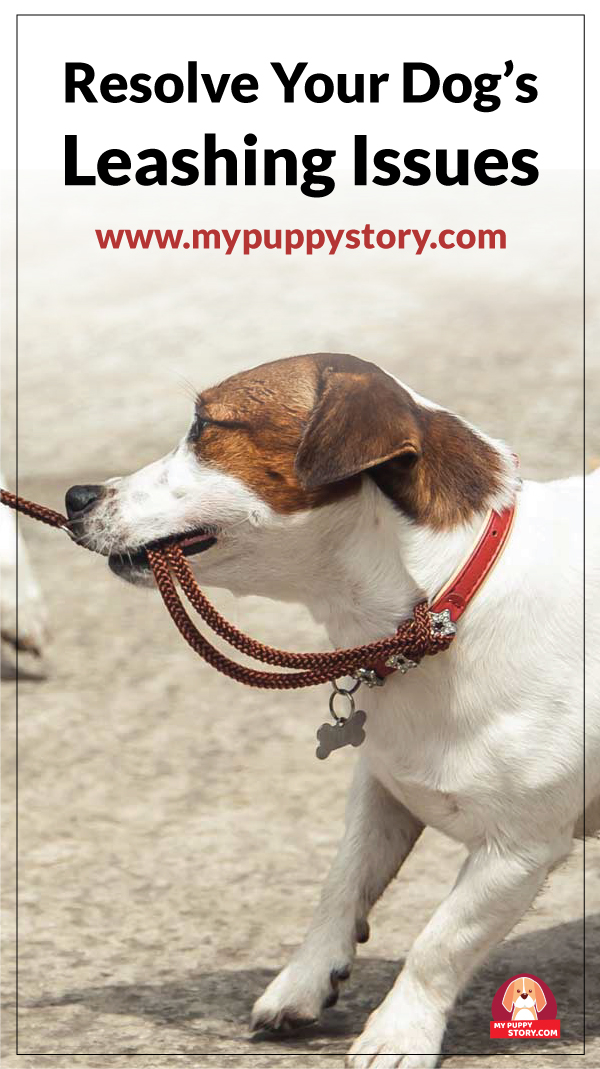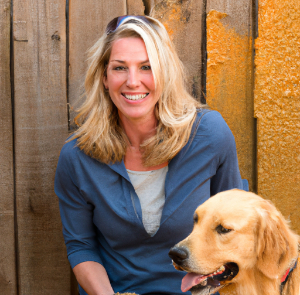
Leash reactivity, lunging, and mouthing are all aggressive behaviors of dogs, and they are caused when a dog is frustrated, threatened, or uncomfortable due to a stimulus. Normally, when a dog is not leashed, it will start barking or move away from the stimulus which is causing fear and frustration. But if a dog is leashed, and unable to run and keep a distance from the stimulus, it will start acting aggressively. In the hope that the stimulus will go away from him, he will start acting defensively. Leash aggression is a common issue in dogs and is faced by many dog owners. Fortunately, there are many tips and techniques that you can adopt to overcome the issues you have with leashing your dogs.
Leash issues such as pulling, mouthing, and lunging are very common in dogs. These behaviors can turn a pleasant and soothing walk into a terrible one. The way your dog behaves when it is leashed can cause serious troubles for you and the people around. Once you understand why your dog is behaving aggressively while it’s leashed, you can find ways to handle the situation. The following tips can be helpful in overcoming leash issues of your dog:
Introduce treats to distract:
When your dog starts behaving aggressively with the leash, for example, pulling, lunging, chewing, or mouthing it; you can give treats to distract him. Start distracting your dog to decrease his frustration and take his mind off from whatever is causing him behave this way. Make sure that your dog is hungry when you take him out and this way he will be more attracted to the treats. Keep a lot of treats with you especially the ones which your dog loves.
If you have figured out what is causing your dog to react aggressively, wait for that stimulus to come and then introduce the treats. For example, if your dog starts behaving aggressively with the leash when he sees another dog, give him a treat when another dog passes nearby. Then if another dog passes by, give him another treat. This way he’ll learn that when a dog passes by, he will be given a treat and then he will stop behaving aggressively.
Look out for how you hold the leash:
If your dog is very disciplined and calm when he is unleashed, then there must be some trouble with the leash or how you hold it. If your dog isn’t scared of anything such as other dogs, strangers, or any other stimulus when he is unleashed, but starts mouthing, pulling, or lunging when he is leashed, you should change the way you hold or pull the leash. Sometimes the leash can cause irritation and hurt the dog, therefore you should take care of this factor too and loosen the grip to make your dog comfortable. Also, make sure that your dog is leashed with a no-pull harness. You should also train your dog earlier than leashing him because if he is not trained to wear a leash, he will act aggressively.
Desensitize your dog:
Desensitizing is an effective technique and is used to treat many problems and issues in animals. While you’re walking with your leashed dog, keep an eye on the surroundings and analyze what's causing your dog to show aggressive behavior. When you have figured out what's causing your dog to be fearful and frustrated, use that stimulus to train your dog and make your dog used to it. For example, if your dog gets frustrated when he sees cats when you go out for a walk, try and introduce him to a cat. Show a cat to your dog from a big distance and make sure that he doesn't get aggressive - and make sure that your dog is leashed. Then give him some treats or things to play so that he feels that the stimulus is nothing to be scared. When you feel that your dog is no more frustrated or aggressive, move the stimulus closer to him. If your dog is being aggressive and has started showing leash issues, that means you have moved the stimulus close to him very quickly.
If your dog has no leash issues and he behaves very calmly and nicely when he is leashed and is out to walk with you, then that's a good habit, but you should also train him to maintain this behavior. There are certain behaviors that can lead to pulling, mouthing or lunging of the leash and they should be avoided. As a dog owner, you should be aware of the factors or stimuli that can cause dog aggression and frustration. The following are some things to remember if you want to prevent leash issues with your dog in future:
Leash issues can be dealt with positively, and they are very curable if you train your dog and handle the situation wisely. Remember never to punish your leash reactive dog as this is something which it can't control. By using the above tips and techniques, you will not only overcome the aggressive and frustrating behavior of your dogs, but also be able to prevent it in the future. If your dog has leash issues, only your hard work and passion can make him get rid of this bad behavior. If you feel you aren’t able to train him properly, feel free to get the help of a professional dog trainer. Leash issues are correctable and can be eliminated by caring and paying proper attention to your dog.
SHARE TO YOUR FRIEND:

